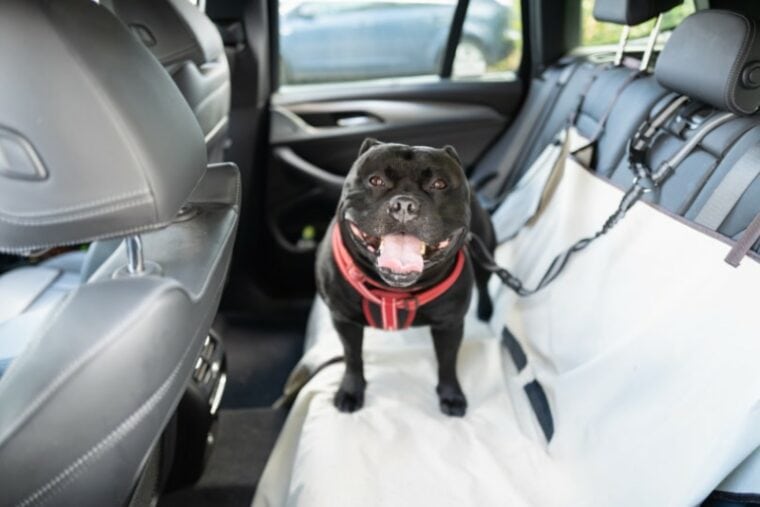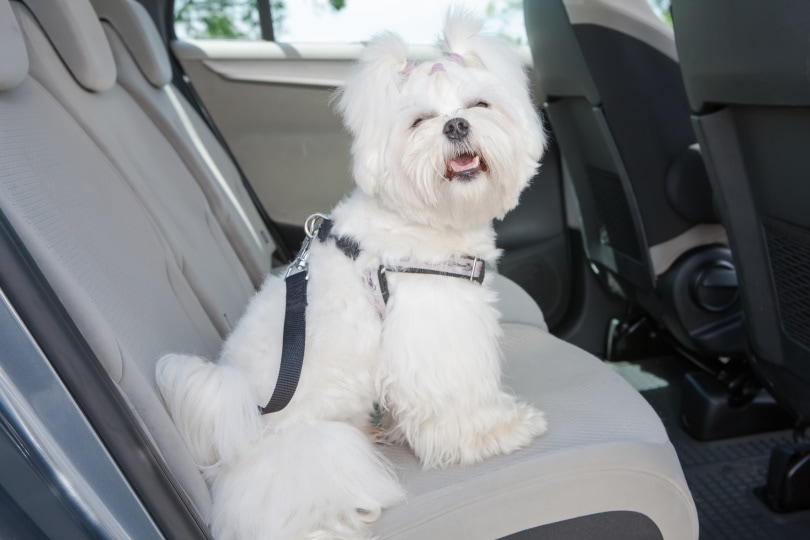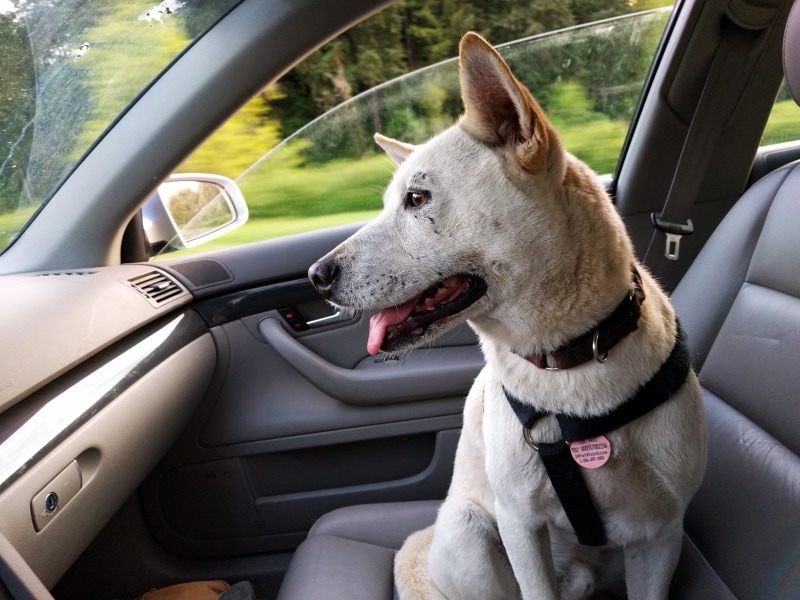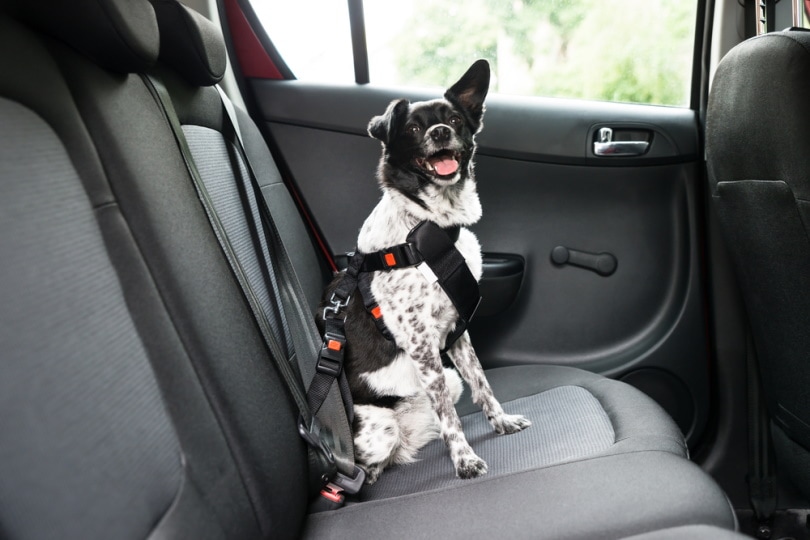
Hundreds of dogs die each year simply because they were left in a parked vehicle1 that became too hot. Many more suffered the effects of heat stress. These deaths and illnesses are preventable by leaving pets at home when they can’t accompany you inside when running errands.
If you come across a pet left in a hot vehicle that’s showing signs of heat stress, your first instinct may be to break the window and free the dog. Before making that bold decision, be sure to step back, evaluate the scene, and take the proper steps to limit your legal liability while protecting the pup.
Why Leaving Dogs in Parked Cars Is Dangerous
According to the Humane Society of the United States, the temperature inside a vehicle can climb to 116° F within one hour on a 72° F day. When it’s just 8 degrees warmer outside, on an 80° F day, it takes only 10 minutes for the inside of a vehicle to reach 99° F.
There are many myths about leaving dogs in cars, such as leaving a window rolled down for ventilation or parking in the shade. However, studies have shown that these have minimal effect on the inside temperature of a vehicle. Even leaving the air conditioning on may not be effective, as dogs are known to accidentally switch off things like heating and cooling as they move around the vehicle, especially as they become frantic.

What to Do If You See a Dog in a Hot Car
1. Avoiding Liability
Even with the extreme danger of leaving pets in parked cars, Good Samaritans can sometimes still be held legally responsible for damages caused by removing the dog to save them. Depending on the state, it could be paying for the broken window or facing criminal charges for property damage.
It’s essential to protect yourself by taking the steps defined by your State’s Good Samaritan laws.
While the steps below are not legal advice, they are meant to offer a quick checklist of things to consider if you are faced with a dog in need.
2. Evaluate the Situation
Just because you notice a pet in a parked vehicle does not always mean they are in immediate danger. It’s essential to evaluate the scene to determine if action must be taken and how quickly. Consider answering the following questions:

3. If There Is Imminent Danger
To determine if the dog is in danger of significant danger or even death, you’ll need to look for signs of heat stroke. These include:
If the dog seems to be suffering from any of these signs, call 9-1-1 immediately and inform them of the situation, your location, information about the vehicle and dog, and the dog’s signs.
It is recommended to take photos of everything at the scene or have someone else nearby take photos and videos as you focus on speaking with emergency services and the pet in danger.
4. If You Have Some Time
The pet may show early signs of heat stress. If they are panting but active or relaxed inside the vehicle, then you should have a few minutes to take additional steps and help save the pup.

What Not To Do
When deciding whether it is necessary to rescue a dog who may be suffering from heat stroke, you should also consider what not to do.
Caring for The Dog After Rescue
Once the dog is removed from the parked car, you’ll need to provide some first aid for heat stroke. If animal control or EMS services are on-site, they will be able to take over and get the dog to a vet for more urgent care.
First, be sure to have a way to restrain the dog and keep them from running off, especially if you are in a parking lot where cars will be driving by. There may be a leash for them inside the vehicle, or you can fashion something that will suffice for the few minutes you are waiting for emergency care
Then, get the dog to a shaded area or even inside a store or other building where it’s cool if a manager will allow it. Poor cool water over the dog slowly to help bring their body temperature down. Do not use cold water since it can cause shock, and don’t place wet towels over them as it can trap body heat and worsen their condition. If the dog is interested in drinking water, allow them to drink in small amounts.

Good Samaritan Laws
Many states have now passed laws making it illegal to leave a dog in a parked car alone. Some states have also passed laws protecting the Good Samaritans who rescue pets in hot cars. As with most rules, stipulations state what steps should be taken for the Good Samaritan law to apply.
For example, in Arizona, a Good Samaritan must notify law enforcement, medical responder, or animal control of the situation and prove they’ve already checked for unlocked doors before they are protected from legal liability for destroying a vehicle’s window. In Colorado, a Good Samaritan must also make a reasonable effort to locate the vehicle’s owner.
Final Thoughts
We hope that you never come across a dog left in a parked vehicle that is suffering. However, if you do, you now know some of the steps you could take to help protect them as well as yourself. Remember that the laws regarding pets left in vehicles and the Good Samaritans rescuing them are different in every state, and understanding the specific laws governing your region is essential, ideally leave it to the professionals if time allows.
- Related Read: How Hot is Too Hot for a Dog in a Car?
Featured Image Credit: Christine Bird, Shutterstock








